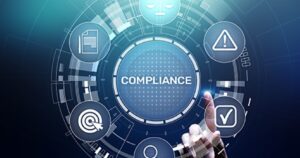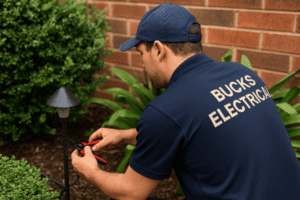In today’s fast-changing world, businesses and industries are constantly expanding. While growth is essential for the economy, it is equally important to balance it with environmental sustainability. One crucial regulatory mechanism that ensures this balance is environmental clearance. If you are planning to set up a new industry, infrastructure project, or expand an existing one, you will likely come across this requirement.
Many entrepreneurs and companies often get confused about what environmental clearance really means, why it is necessary, and how to obtain it. This guide will simplify the concept and help you understand the process in detail so that you can move ahead with compliance confidently.
What is Environmental Clearance?
Environmental clearance, often referred to as EC, is an approval granted by the Ministry of Environment, Forest and Climate Change (MoEFCC) or the State Environmental Impact Assessment Authority (SEIAA). It acts as official permission for projects that may have an impact on the environment, including industries, mining operations, infrastructure projects, and power plants.
The main purpose of environmental clearance is to ensure that proposed activities do not harm natural resources, biodiversity, or the health of local communities. It involves a careful evaluation of the project’s potential environmental impact and ensures measures are taken to mitigate any risks.
Why is Environmental Clearance Important?
Many business owners view environmental clearance as a regulatory hurdle. However, it plays a critical role in sustainable development.
-
Environmental Protection: It ensures that industries adopt eco-friendly practices and minimize pollution.
-
Legal Compliance: Obtaining clearance is mandatory under the Environment (Protection) Act, 1986, and failure to comply can result in penalties or project shutdown.
-
Risk Management: By assessing potential environmental risks in advance, projects can avoid long-term legal and financial issues.
-
Community Well-being: Environmental clearance safeguards the health and livelihood of nearby communities by ensuring responsible use of resources.
-
Investor Confidence: Projects that comply with environmental regulations often attract more investors as they are seen as responsible and sustainable.
Which Projects Require Environmental Clearance?
Not every business needs environmental clearance, but certain categories of projects are strictly regulated. Some of the common examples include:
-
Mining and quarrying projects
-
Large-scale construction and infrastructure projects
-
Thermal power plants
-
River valley and hydropower projects
-
Industrial estates and manufacturing units
-
Ports, harbors, and airports
-
Hazardous waste management facilities
The MoEFCC has categorized projects into different levels depending on their size, location, and potential impact. Category A projects are cleared at the central level, while Category B projects are cleared at the state level.
The Environmental Clearance Process
Obtaining environmental clearance may seem complicated, but understanding the steps makes it easier to navigate. Here’s a step-by-step breakdown:
1. Screening
At this stage, authorities determine whether the project requires an Environmental Impact Assessment (EIA) study or not. Smaller projects with minimal environmental risks may be exempt.
2. Scoping
If an EIA is needed, the project proponent prepares the Terms of Reference (ToR), which outlines what the study should cover. This ensures that the assessment is tailored to the project’s specific impact areas.
3. Public Consultation
This is one of the most crucial steps. Public hearings allow local communities and stakeholders to voice their concerns about the project. Their feedback is taken into account before clearance is granted.
4. Environmental Impact Assessment Report
The EIA report is prepared by experts, highlighting potential environmental consequences and suggesting mitigation measures. It covers aspects like air and water pollution, soil degradation, biodiversity impact, and social implications.
5. Appraisal
The Expert Appraisal Committee (EAC) or the State Level Expert Appraisal Committee (SEAC) reviews the report, public consultation findings, and mitigation plans before making a recommendation.
6. Grant of Environmental Clearance
Finally, based on the appraisal, clearance may be granted with specific conditions that the project must follow throughout its lifecycle. In some cases, clearance may be rejected if the risks are too high.
Documents Required for Environmental Clearance
Applicants need to prepare detailed documentation before submitting a proposal. Some commonly required documents include:
-
Project report with details of location, size, and objectives
-
Environmental Impact Assessment (EIA) report
-
Terms of Reference approval
-
Site plan and land ownership documents
-
Pollution control measures and disaster management plan
-
Details of raw materials, energy use, and waste management
-
NOC from the state pollution control board, if applicable
Challenges Faced in Obtaining Environmental Clearance
Many businesses face delays and rejections while applying for clearance. Some of the common challenges include:
-
Lack of awareness about the process and required documents
-
Incomplete or inaccurate Environmental Impact Assessment reports
-
Resistance from local communities during public hearings
-
Changes in government policies or regulations
-
Delays in appraisal due to backlog of applications
To overcome these challenges, it is advisable to seek professional assistance from consultants experienced in handling environmental clearance applications.
How to Ensure Smooth Clearance
If you are planning to apply for environmental clearance, here are some practical tips to make the process smoother:
-
Start early: Do not wait until the project is ready to launch; clearance can take several months.
-
Hire experts: Engage professional consultants who understand environmental laws and EIA requirements.
-
Be transparent: Share accurate information and engage with local communities proactively.
-
Monitor compliance: Even after receiving clearance, ensure regular monitoring and reporting as per the conditions imposed.
-
Stay updated: Keep track of regulatory changes by MoEFCC and SEIAA.
Conclusion
Environmental clearance is more than just a legal formality. It is a crucial step towards responsible growth and sustainable development. For businesses, it offers an opportunity to showcase their commitment to protecting the environment while securing long-term operational stability. By understanding the process and preparing thoroughly, you can avoid unnecessary delays and ensure your project moves forward smoothly.
If you are planning a project that may require environmental clearance, consulting experts can save you time, effort, and costs in the long run. Balancing development with environmental responsibility is not only mandatory but also the right way forward.
FAQs
1. What is the validity period of environmental clearance?
Environmental clearance is generally valid for 5 to 7 years, depending on the type of project.
2. Who grants environmental clearance in India?
It is granted either by the Ministry of Environment, Forest and Climate Change (MoEFCC) for larger projects or the State Environmental Impact Assessment Authority (SEIAA) for smaller ones.
3. Can environmental clearance be revoked?
Yes, if a project fails to comply with the conditions imposed or causes significant harm to the environment, clearance can be revoked.
4. Is public consultation mandatory for all projects?
Public consultation is required for most projects, except in cases where the impact is minimal or for projects of national importance.
- Environmental Clearance in India: Process, Importance, and Compliance
- Understand the process, requirements, and importance of environmental clearance in India. Learn how to apply and ensure compliance. Get expert help today.
- Environmental Clearance, EIA, MoEFCC, Sustainable Development, Environmental Laws in India, Project Compliance
Related posts:
No related posts.





